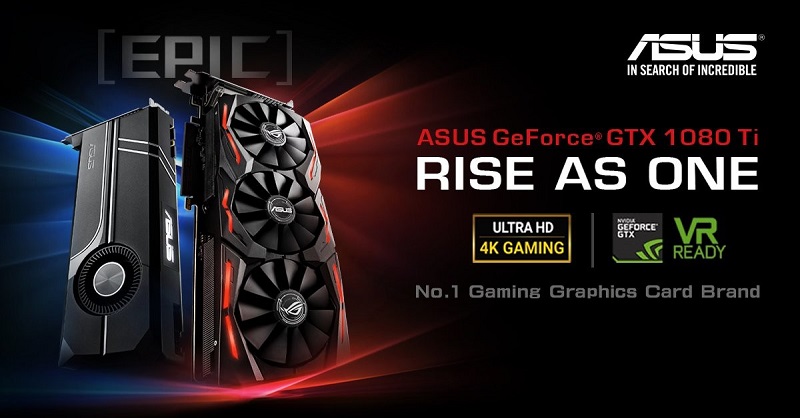What you see in images is the aspect of the first GTX 1080 Ti that will go on the market next March 10, by ASUS. The company will attack with two very different models in appearance: the Turbo model is the least striking, while ROG STRIX imposes more with a triple fan configuration.
We are faced with custom or customized models on what Nvidia initially introduced. The changes are mainly in the cooling systems introduced, which allows you to play with better overclocking in the latest Pascal GPU introduced in the market.

The GeForce GTX 1080 Ti Turbo has a single fan, more modest, and a double color tone – black / gray – that makes it look more elegant and simple. There are still no prices on the table, but this version should not go too far from the reference price tagged by Nvidia $700.
The ASUS ROG STRIX GeForce GTX 1080 Ti is something else in sight, more to the taste of the gaming world. It comes with a DirectCU III cooling system (aluminum radiator and five copper heat pipes) and three 100 mm fans. It also has ASUS Aura, the RGB lighting system of the house.
You may also like to read another article on imindsoft: Nvidia GeForce GTX 10 for laptops: The same power for games and virtual reality
As we discussed early, the most interesting side effect of the new 1080 Ti is in the price decrease in the rest of the brand catalog, we will begin to see how third-party manufacturers offer 1080 and 1070 for a quantity more palatable than Ti.
Possibly brands like ASUS will have prices higher than what Nvidia marked, but it is a reality that all prices have been lowered in this generation. This reverberates to brands and stores, but seems a necessary move before the arrival of AMD and its teams based on Vega.

AMD is getting quite dizzy the market, something that usually likes the brand, but this time seems to be much more serious than on previous occasions: we have seen with Ryzen processors and its excellent performance / price ratio to Intel’s offer.
Nvidia has to be smelling that AMD Radeon RX Vega is not going to be a joke and before the actual product arrives – not a logo shirt – they are making their offer more attractive: they can sell quite a few units before AMD can offer anything. Unlike Intel that remains impassive and at its pace.
I take the article on the GeForce GTX 1080 Ti to show that ASUS is not the only one in this, despite being the most powerful company in this market that returns to catching good color.